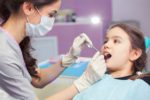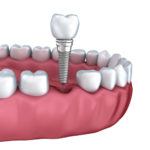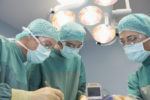Table of Contents
Professional or recreational sports is usually seen as a contribution to maintaining the health of the individual. Although this attitude, in principle, is accurate and understandable, and because the practice of sport has multiple positive effects on our body and health, sports activities, especially those professional, are often associated with numerous sports injuries. Additionally, to achieve better results athletes often modify eating patterns, which can also have short-term and long-term health effects.
Playing sports can also have an impact on oral health. Although, at least statistically speaking, the sport has a much more positive than negative effects on general health. Yet when speaking separately for the oral health, these effects generally have harmful nature as they are usually connected with sports injuries of orofacial system and changes in the oral tissues caused by specific eating patterns characteristic for sportsmen. Fortunately, many injuries and adverse effects can be adequately prevented and/or minimized. Part of dentistry that deals with the study and prevention of harmful effects of sport on oral health is called the sports dentistry. The importance of sports dentistry in preserving oral health is growing in accordance with the growing popularity of the sport in a given society.
In which sports the risk of mouth injuries is the greatest?
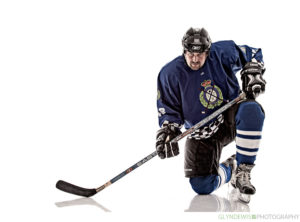 The largest number of sports injuries in dental system occurs in individual or team sports where close physical contact is present with an opponent and/or an object that is used in the game (hockey stick, puck, ball, etc.) resulting in uncontrolled force strength in variable directions. Due to this, the most dangerous sports include hockey (ice and grass), football, boxing and others similar. In sports such as inline skating, mountain biking or skateboarding, there is a high risk of injury of orofacial structures during falls and bumps on land. In 1990. World Dental Federation (FDI) has classified all sports in regard to frequency and severity of orofacial injuries into:
The largest number of sports injuries in dental system occurs in individual or team sports where close physical contact is present with an opponent and/or an object that is used in the game (hockey stick, puck, ball, etc.) resulting in uncontrolled force strength in variable directions. Due to this, the most dangerous sports include hockey (ice and grass), football, boxing and others similar. In sports such as inline skating, mountain biking or skateboarding, there is a high risk of injury of orofacial structures during falls and bumps on land. In 1990. World Dental Federation (FDI) has classified all sports in regard to frequency and severity of orofacial injuries into:
- Sports with a high risk of orofacial injuries: boxing, football, American football, hockey (ice and grass), martial arts, rugby, ice skating and paragliding.
- Sports with medium risk of orofacial injuries: basketball, diving, gymnastics, horse riding, squash courts, water polo, handball, cricket, baseball and parachuting.
The risk of injury during sports, and especially in ones with recreational nature, grows in untrained people with poor physical condition. Sports injuries of the oral cavity are fairly common in children and young people, slightly more often in boys than in girls. The incidence of sports injuries in oral cavity differs between men and women. According to Cohence and colleagues research in the group of team sports for men the incidence of oral injuries in basketball is 10.6 percent, 2.0 percent in football and in baseball 0.5 percent. In women, the injuries occur in basketball in 5.0 percent of cases, in volleyball 0.7 percent and water polo 0.3 percent.
Sports injuries of the dental system
Sports injuries of the mouth and dental system affect the soft and hard oral tissues. When we talk about soft tissue injuries, generally refers to the injury of the lips, cheeks and tongue. These tissues get hurt because they are on the direct path of the force and cover the hard oral tissues – teeth and jaw bone that force stop the force and partially absorb it. Teeth, jaw bones and facial bones injuries may be characterized as trauma, fractures and teeth ejections.
Dental trauma include simple fractures of dental crown (when there is no opening of the pulp chamber), complex fractures of the crown of the tooth (pulp chamber is opened), teeth subluxations, fractures of the crown and root of the tooth, root canal fractures, dislocations of teeth and the outbreak of the complete tooth from the bone.
The most common sports injury of the oral cavity is tooth crown fracture, which makes 79 percent of all teeth injuries or 14 percent of all oral trauma caused by sports.
The most complex injury is or avulsion of the tooth. Tooth avulsion makes 21 percent of all teeth injuries or 10 percent ejection of the entire tooth of all oral trauma caused by sports.
Jaw bone and facial bones trauma include primarily crushing of bones, fractures of the jaw and temporomandibular joint and facial bones (the lower edge of the orbit, etc.).
Sports nutrition and oral health
To achieve the best results sportsman often change their diet. In the modern sport, special sports nutrition has become a necessity because it helps the increase of muscle mass and compensate nutrients while preserving and improving health. Every sports activity depletes the body which then needs additional quantities of proteins, vitamins, minerals, amino acids, creatine, carbohydrates and other supplements. Sports nutrition and supplements exist in various forms: powders, tablets, capsules and liquid.
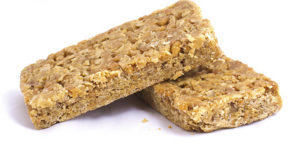 The impact of sports nutrition on oral health can be manifested in two ways: as an increased incidence of dental caries and/or increased frequency of tooth erosion. For example, increased intake of carbohydrates, especially refined ones that are easy to stick to the teeth surface and hard to remove (like energy bars), increases the risk of dental caries. Also some sports supplements can lead to a reduced secretion of saliva, which reduces the mechanical rinsing of oral cavity and the removal of food debris and bacteria from the tooth surface, which then creates a predisposition for caries development.
The impact of sports nutrition on oral health can be manifested in two ways: as an increased incidence of dental caries and/or increased frequency of tooth erosion. For example, increased intake of carbohydrates, especially refined ones that are easy to stick to the teeth surface and hard to remove (like energy bars), increases the risk of dental caries. Also some sports supplements can lead to a reduced secretion of saliva, which reduces the mechanical rinsing of oral cavity and the removal of food debris and bacteria from the tooth surface, which then creates a predisposition for caries development.
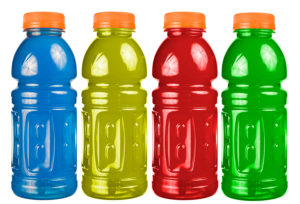 A number of sports drinks, which are commonly acidic and have low pH values, with long-term and frequent consumption can lead to excessive wear of hard dental tissue (enamel) and erosion of teeth. For those teeth enamel becomes extremely thin and quickly consumed. Due to the loss of enamel and dentin exposure, teeth can become very sensitive to thermal and chemical stimulants. Apart from the consumption of beverages, the risk of dental erosion also exists in professional swimmers who frequently swim in the pools that contain chlorine.
A number of sports drinks, which are commonly acidic and have low pH values, with long-term and frequent consumption can lead to excessive wear of hard dental tissue (enamel) and erosion of teeth. For those teeth enamel becomes extremely thin and quickly consumed. Due to the loss of enamel and dentin exposure, teeth can become very sensitive to thermal and chemical stimulants. Apart from the consumption of beverages, the risk of dental erosion also exists in professional swimmers who frequently swim in the pools that contain chlorine.
The injury has occurred, what to do?
When the mouth injury happens, it is necessary to react assembled and without panic. Proper and timely treatment can prevent many adverse consequences. It is best that each injury be processed as quickly as possible by a dentist.
Ejection of the entire tooth is the most dramatic and the most complex oral injury, which is considered as an emergency dental situation and it is necessary to visit the dentist as soon as possible!
In addition, the rehabilitation of avulsed tooth can be very time consuming, expensive and with uncertain final result, so it should be approached very seriously. According to Emerich and his associates, there are six simple rules that should be applied in the event of tooth ejection:
- Find a tooth that has been knocked out as soon as possible,
- The knocked out tooth should be hold just to his crown (white part of the tooth),
- As soon as possible return the tooth in its slot in the mouth, the adjacent teeth can serve as orientation points (before that the tooth should not be rubbed or cleaned, perhaps it can be gently rinsed with milk, saline dilution or saliva),
- Tighten all other loose teeth (eg. with aluminum foil),
- If the tooth can not go back into the slot, it should be immediately plunged entirely into a moist environment (bowl with milk, saline dilution or saliva) or wrapped in moistened handkerchief. If the condition allows, knocked out tooth can be put in patient’s mouth and kept between lower molars and cheek (patient should be very careful not to swallow or inhale the tooth),
- Visit the dentist as soon as possible.
How to prevent sports injuries of the mouth
Protruded upper teeth and their lack of coverage with lips can be a predisposition to teeth trauma caused by sports. It was found that the sports-induced teeth injuries are more often in children with incisor overbite higher than 7 millimeters, which is particularly present if there is also an insufficient lip coverage that normally protects the upper front teeth from the direct action of force.
Therefore, an early orthodontic treatment in children with protruding incisors is considered as effective means of preventing later sports dental trauma.
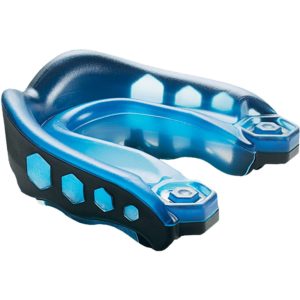 The teeth and other oral cavity tissues can be effectively protected from sports injuries by application of specially designed mouth protectors. They significantly reduce the incidence and severity of oral injuries especially in contact sports. In the mid 20th century, the use of mouthguards becomes mandatory for all contact sports in the United States and Canada. Before applying the guard, frequency of mouth and face injuries was 50 percent, and after the introduction of the guard was only 1.5 percent. Sports mouth protectors can be extraoral and intraoral, depending on the sport in question.
The teeth and other oral cavity tissues can be effectively protected from sports injuries by application of specially designed mouth protectors. They significantly reduce the incidence and severity of oral injuries especially in contact sports. In the mid 20th century, the use of mouthguards becomes mandatory for all contact sports in the United States and Canada. Before applying the guard, frequency of mouth and face injuries was 50 percent, and after the introduction of the guard was only 1.5 percent. Sports mouth protectors can be extraoral and intraoral, depending on the sport in question.
When we talk about intraoral mouthguards, there are finished (commercial) protectors which can be found in sporting goods stores and online, and (semi) individual guards which are made in a dental office in accordance the status and position of teeth in the oral cavity. Although the commercial has more acceptable price, they less protect against injury from (semi) individual.
Conclusion
Modern dentistry should not only deal with the prevention and treatment of dental caries and its consequences, periodontal disease and oral cancer, but it should also be involved in the prevention of mouth injuries. Such a preventive approach implies adequate dental education, orthodontic treatment for children with a predisposition for oral injury and use of protective equipment in contact sports. Education should focus on preventing injuries and the proper and timely action in case of injury, and it should include athletes, young people, children and their parents, teachers and educators, sports coaches, doctors, nurses and naturally dentists themselves.
